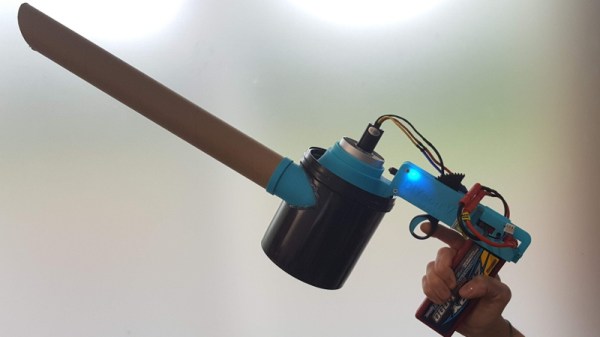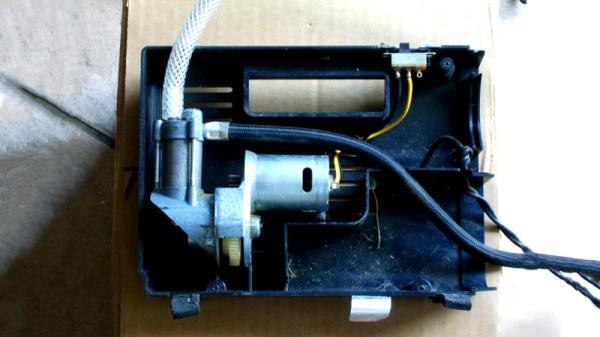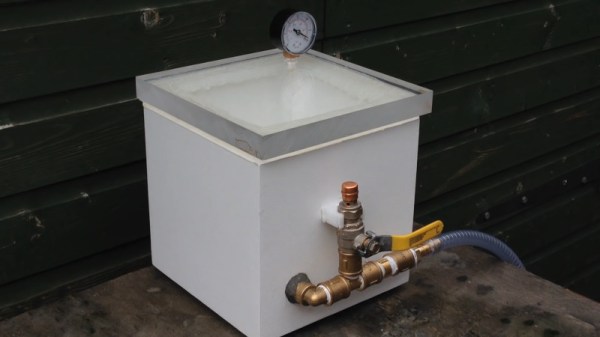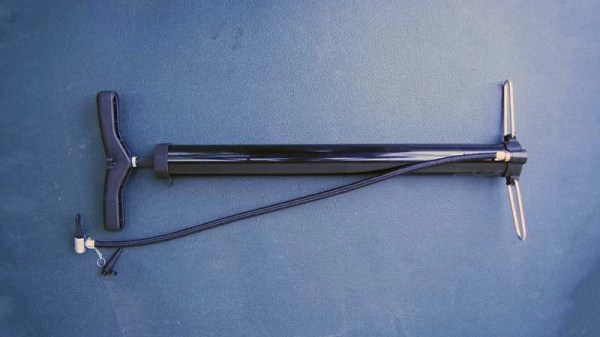There’s been a lot of Altoids tin hacks over the years, but a vacuum cleaner in a tin is something new. In [Toby Bateson]’s first project on Hackaday, he used simple household items to create a functioning vacuum cleaner to use for sucking crumbs out of your keyboard or paper punch holes off your desk.
The vacuum features a retractable suction tube, a low-profile switch, and a bagless waste collection system (the waste is stored and discarded out from the tin itself). A brushed motor and impeller provide the airflow. A scrap of a beer can mounted on the shaft is used for an impeller blade, and two bolts with a thin metal sheet between them are made into a switch (the instructions recommend you finish your drink before using the scrap metal). A sponge is used for filtering the dirt from the motor while a hole is cut out of the top of the tin to provide airflow.

[Bateson] is looking to put his name in the world record book for the world’s smallest vacuum tube, as he recently created an even smaller vacuum in a 1cc tube.
“Oh dear, I’ve spilled something on my desk, whatever am I going to do? Luckily, I have my vacuum cleaner in an Altoids tin…”
Continue reading “The World’s Smallest Vacuum In An Altoids Tin”


















